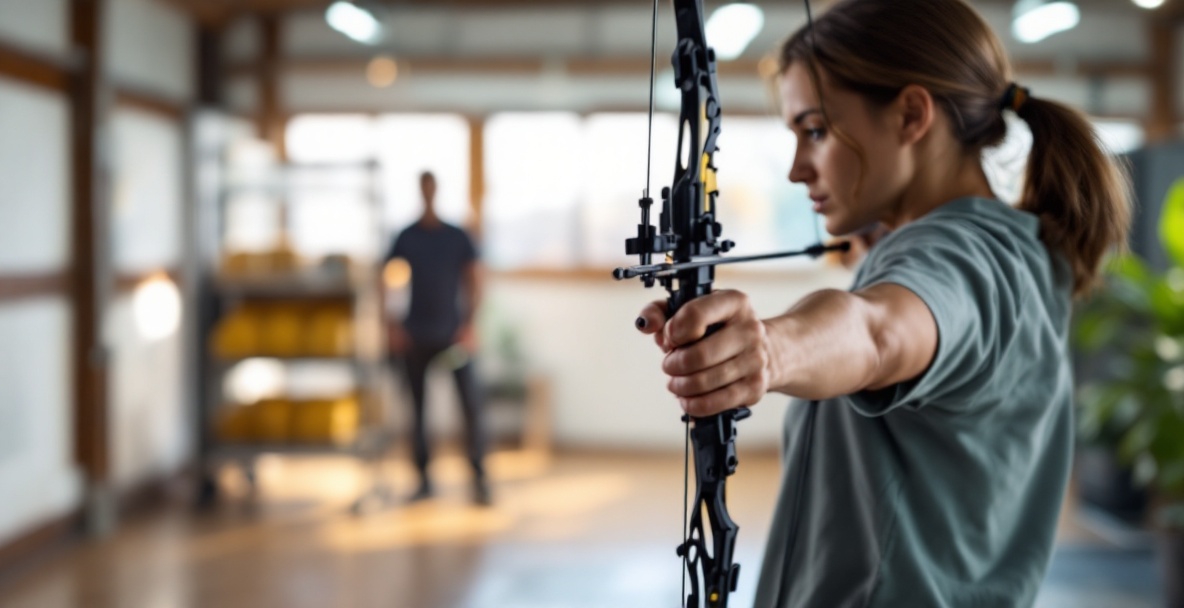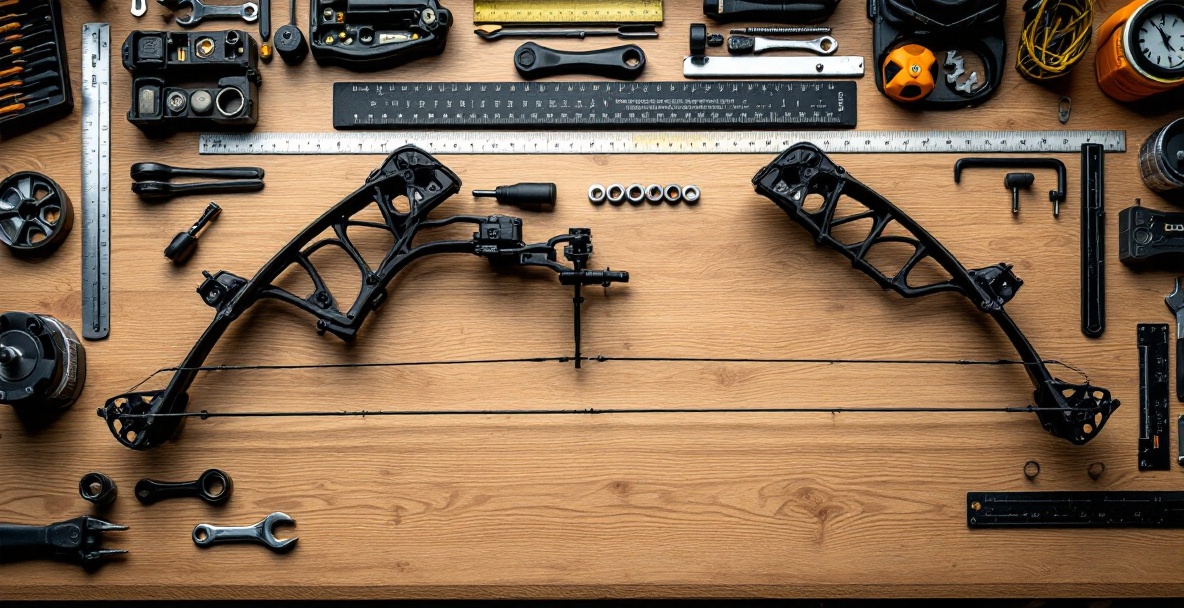When you pull back your bow, the distance from the string’s nocking point to the back of the bow at the arrow rest is your draw length. Getting your draw length right is key to every shot you take. It refines your stance, sets your anchor points, and boosts your aim. If the measurement is off, your form suffers, your shots become erratic, and you might even risk injury. A well-tuned draw length makes all the difference between a satisfying hit and a missed mark.
Why Your Draw Length Is a Game Changer

Your draw length is not chosen at random. It comes from your body proportions and how you feel most comfortable shooting. Every archer has that ideal draw length for smooth, powerful shots. When you set it correctly, your body naturally moves into a balanced position, easing muscle strain and sharpening accuracy. In contrast, an off measurement disrupts your form and can lead to inconsistent shooting over time.
Gather What You Need to Get Started
What Tools You Need
Before you start, round up a few basic items. A sturdy measuring tape or yardstick that shows inches and centimeters is all you need. Having someone help you can be a big plus, though you can manage on your own if you must. If you plan on measuring while at full draw with your bow, ensure your bow lets you adjust the draw length or already fits close to your size. Using a draw length arrow with markings can add a level of precision, especially for compound bows.
Pick a Good Spot to Work
Find a clear, open area where you can move freely. You need plenty of room to fully extend your arms. Setting up near a mirror is smart because it lets you check your form. Good lighting is important so you can clearly read your measurements. If you use your bow for checking, safety comes first. Set up against a proper backstop and make sure no one stands in your path. You should have enough space to assume your regular shooting stance without any compromises.
A Simple Guide for Measuring Your Draw Length

Get Into Your Natural Shooting Stance
For the wingspan method, stand with your feet shoulder-width apart and keep your back straight. Spread your arms out to form a T shape, keeping your shoulders relaxed and your arms level. Make sure your palms face forward, and let your arms hang naturally. If you are using your bow to measure directly, get into your usual shooting stance. Stand with your feet shoulder-width apart, perpendicular to the target line, and pull the bow as you normally would. This way, you capture the real feel of your draw length.
Taking the Measurement Right
If you try the wingspan method, ask a friend to measure from the tip of one middle finger to the tip of the other while your arms are outstretched. The tape should stretch across your chest and back, not behind you. Then, divide that number by 2.5. So, a 70-inch wingspan gives you about 28 inches for your draw length. For a direct measurement with your bow, pull back until you hit your regular anchor point. Have your helper measure from the string’s nocking spot to the grip’s deepest point where your hand rests. Then add 1.75 inches to match the industry standard. Repeat the process a few times and average the numbers to get your best estimate. For more detailed steps, check out the technical guidelines from archerytrade.org.
Tweaking and Perfecting Your Setup

Understanding Your Measurement
Knowing your draw length goes beyond numbers. It affects how you hold your bow and how the arrow flies. If you use a compound bow, adjust its module or cam to match your measurement. Most of these bows let you change in small steps. For recurve bows, a proper draw length guides your bow and arrow selection. Using a draw length that is too long can make the bow feel heavier and hurt your accuracy, or even damage the bow over time. Think of the number as a starting point that you might tweak based on feel. For more insights, visit Archery360's guide to dialing in your draw length.
Making Small Adjustments for Extra Comfort
After you set your bow to match your measurement, hit the range and see how it feels. If you find that your anchor point shifts or you feel either too cramped or overly stretched, then consider a small tweak. Even a ¼ or ½ inch adjustment can go a long way. Your perfect draw length may not be exactly what you first measured. This is also the time to think about your stabilizer setup. A good draw length lets you use precision-engineered stabilizer weights to improve balance and reduce shock. For more pointers, see selecting the right bow for your needs.
Lock In Your Optimal Archery Setup
Knowing your ideal draw length sets you up for better shooting every time. This measurement impacts your grip, your aim, and even your equipment choices. When you nail this down, every shot becomes more consistent, and the whole sport feels more enjoyable. Archery is about constant improvement, and your draw length might change as you grow or adjust your shooting style. Checking your measurement regularly can lead to noticeable gains on the range.
What to Do Next
Now that you have the right draw length, use that knowledge to make smarter gear decisions. Think about how the number affects the balance of your bow and stabilizers. Experiment with different anchor points until you find the one that feels just right. It might help to get advice from experienced archers or a coach, as their insights can be very useful. Many archery shops offer professional fitting services to confirm your measurements and suggest the best equipment options. The goal is to create a setup that feels repeatable and comfortable so you can focus on the target, not on fighting your gear.
Ready to take your archery performance to the next level? Visit OneX Archery today to explore our precision-engineered stabilizer weights that complement your perfectly measured draw length, helping you achieve the balance and stability needed for consistent accuracy.
Leave a Reply